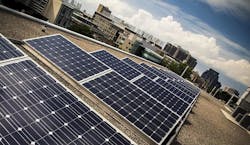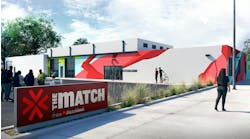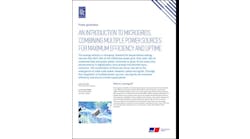The University of Toronto, which commissioned a microgrid as part of its direct-current technology research three years ago, was ranked as the No. 1 university globally in sustainability this month by QS Quacquarelli Symonds.
The higher education analysis firm's QS World University Rankings on Sustainability scored University of Toronto number one worldwide based on social and environmental factors. The school was followed in the QS World University Rankings by the University of California-Berkeley, University of Manchester in the United Kingdom, University of British Columbia in Canada and University of Auckland in New Zealand.
The study evaluated the universities in their approaches to environmental research and education and on-site energy efforts, in addition to other factors.
“At the University of Toronto, we believe that all sectors need to be playing a role in the transition to a more sustainable and just world,” Kristy Faccer, who is part of the school’s President’s Advisory Committee on Environment, Climate Change and Sustainability, said in a section of the QS Sustainability Ranking report.
“In research, we are exploring how to think and approach research with sustainability” as top of mind,” she was quoted in the QS report. “We are also collaborating with others to accelerate climate action implementation.”
In 2020, the University of Toronto commissioned an on-campus rooftop solar and energy storage microgrid. Located in the Energy Systems lab, the installation aids the researchers in studying DC microgrid and system integration technology. The microgrid also supplies power to DC loads such as LED lighting and more.
University Microgrids are the Big Plan on Campus
Panel Session at Microgrid 2024 in Baltimore
April 22-24: Register to Join the Revolution in Energy
WorleyParsons was contracted to install the DC microgrid system at the university.
Elsewhere in the QS rankings, the Massachusetts Institute of Technology was lauded for its research and on-campus work around sustainability in energy. The MIT Energy Initiative also has focused some of its work around hybrid and laboratory-scale microgrids.








